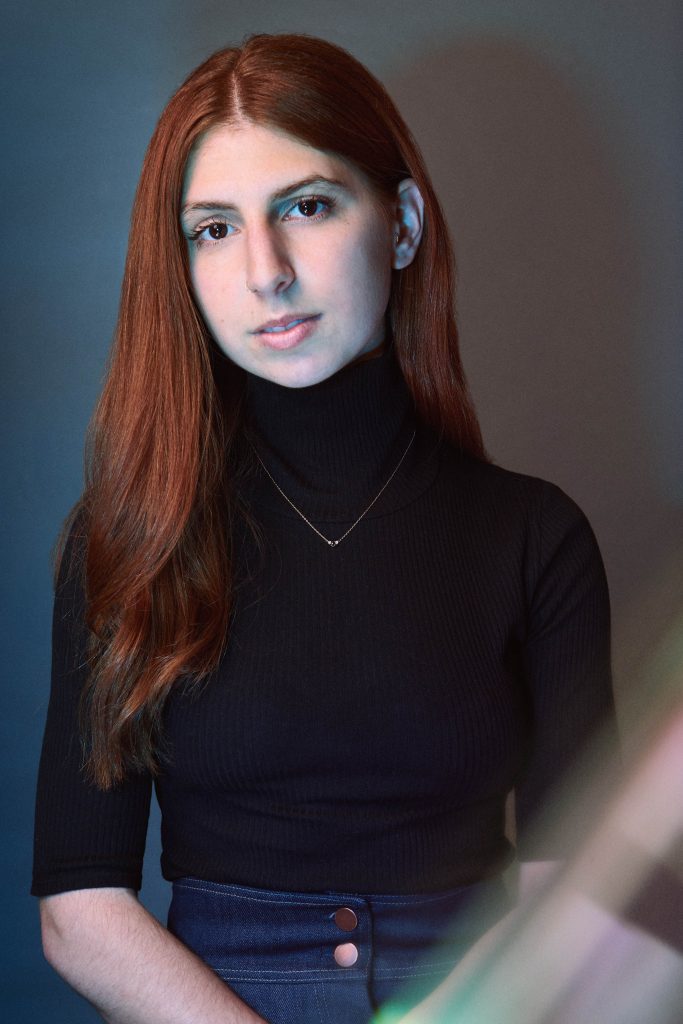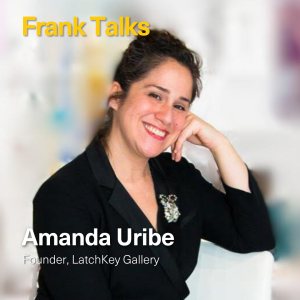Alison Karasyk is an independent curator born and based in New York City. Her research interests focus on the intersection of gender, space, memory, and materiality. Alison completed her BA at Oberlin College and her MA at the Center for Curatorial Studies at Bard College (CCS Bard). Alison has held curatorial and editorial positions at the North Norwegian Arts Centre, the Brooklyn Museum, Aperture Foundation, the Museum of Modern Art and Crush Curatorial. She was Assistant Curator of the Lofoten International Art Festival (liaf) 2017: I Taste the Future and was the 2018 recipient of the Ramapo Curatorial Prize. Alison was a 2020 resident of the Sandretto Foundation’s Young Curators Residency Programme in Turin, Italy. She has staged exhibitions and performances at Kunsthal Charlottenborg (Copenhagen, Denmark), Palazzo Re Rebaudengo (Guarene, Italy), the Hessel Museum (Annandale-on-Hudson, New York), The Kitchen (New York, NY), and the Berrie Center for Performing and Visual Arts (Mahwah, New Jersey), among others.
What was your first job in the Arts?
Curatorial Intern in the Department of Photography at the Museum of Modern Art (the year after I graduated from Oberlin College).
What was the most useful or important thing you learned at that job?
The importance of being nimble.
Tell us a little more about yourself. When did you realize you wanted to pursue a career in this industry?
After interning at MoMA and Aperture Foundation and working at the Brooklyn Museum as a Curatorial Assistant, I began my MA at CCS Bard in Annandale-on-Hudson. The summer in between the two years of the program, every student does a mentorship. Unlike the majority of my cohort who wanted to work at well-known, urban institutions, I wanted to do something weird, site-specific, and outside of my comfort zone… to be in a different cultural context where I could get my hands dirty and work directly with artists.
I connected with Milena Hoegsberg, a Danish-American curator and CCS Bard alumni who was co-curating the Lofoten International Art Festival (liaf), a small Nordic biennial above the arctic circle, with the Belgian curator Heidi Ballet. The exhibition was installed in a few former cod oil factories in the remote historical fishing village of Henningsvær, Norway. Installations, performances, workshops and listening tours spilled out onto local streets and onto cliffs overlooking the ocean. Milena and Heidi invited several artists to make new work and treated the commissioning process as a platform for co-thinking. Titled I Taste the Future, the show included two research archives focusing on resource extraction and nation state building, exposing local violences of environmental degradation and indigenous persecution, which of course influence the present and will inevitably impact the future. Their collaborative approach to working with artists and their critical engagement with the ghostly murmurs of history inspired me deeply. Though I was already in graduate school, my time as assistant curator of LIAF 2017 opened my eyes to a new ecosystem of possibilities within exhibition-making, and confirmed my need and want to pursue this kind of work.
What do you do now?
I am an independent curator who collaborates with artists through exhibitions, research, writing and project management.
Where are you from?
New York City
What is the arts community like there?
Vibrant, sprawling, a little self-centered
Has where you come from shaped what you do in the arts today?
Absolutely
What is the best piece of advice you can give about working in the art world?
Hold onto your sense of humor. Give yourself moments of pause to appreciate and engage with the artwork in a personal and intimate way.
What is one of the greatest accomplishments in your career so far?
Expanding my graduate thesis research into a large group exhibition.
What has been a challenge for you?
Wrapping my head around the art world’s claims of progressivism in contrast with its various histories of marginalization.
What is something you do every day at the office (or your current home office)?
Accumulate a beverage platter on my desk.
What do you think defines a good employee? And what defines a good boss?
A good employee is a thoughtful, detail-oriented team-player who adapts and anticipates the needs of their colleagues and collaborators. They care for and prioritize the artwork, artists, and communities with whom they work.
A good boss is invested in the growth and success of the individuals that make up their team. They know how to mentor and can lead under pressure. They are not intimidated by new talent, new knowledge or new protocols.
The best employees and bosses let go of ego.
What do you think makes a person hirable?
Someone who demonstrates genuine interest and the ability to be a creative problem solver.
What is your advice to making yourself stand out in your workplace? Any good tips for giving a great interview?
To stand out in a workplace, demonstrate a willingness to wear many hats, to take initiative, and to seek out constructive feedback.
Have a well-researched question ready.
Is there any advice you would like to give people entering the art world?
Work with art if it doesn’t feel like work.
What is the best exhibition you have seen in the last year?
A few recent favorites include Tetsumi Kudo: Cultivation at the Louisiana Museum in Copenhagen; John Edmunds: a sidelong glance at the Brooklyn Museum, Lucy Raven at Dia Chelsea, Diedrick Brackens: Rhyming Positions at Jack Shainman, and Chloe Bass: The Parts, born on the artist’s instagram and installed in various locations throughout Brooklyn.
What artwork is in your home office?
Prints by Adelita Husni-Bey and Marco Giordano, a Paul Mpagi Sepuya photograph, sculptures by Devra Freelander, and a Vito Acconci lithograph.
What is/was your greatest WFH challenge? Or a WFH luxury you don’t want to lose ever again?
I miss(ed) in-person studio visits.
How do you think art can play a fundamental role in the world’s recovery from Covid19?
By continuing to expand the horizon, by challenging us to look outside of our own little lives, and by reminding us of the need to take care of the environment and one other.
How do you think art should be shared and/or experienced moving forward?
In as many formats and places as possible…
How has your current job adapted to the new virtual landscape? What do you think can be done better, if anything?
Installing via zoom, when the artist cannot travel to install a new commission, has been a big area of adaptation. It’s a learning process for everyone involved.
In terms of what can be done better, I’m interested in seeing how virtual public programs can continue to adapt. I’d like to experience more artist-generated alternatives to standard Zoom panel discussions. For instance, I attended a brilliant online movement workshop facilitated by the artist Tamar Ettun in April of 2020 that acknowledged, embraced and pushed against the boundaries of the screen at such a challenging moment in time. QR codes have also allowed for some expanded modes of access and mediation, which is one thing that I hope will continue.
What is your go to snack these days? And your go to soundtrack?
Sungold cherry tomatoes wrapped in basil (which requires me to stand up, take a break from my screen and walk to the garden).
Beverley Glenn Copeland’s Keyboard Fantasies and Issy Wood’s Cry Real Tears.
If you could own a work by 5 different artists, who would be in your collection?
Only five? Today I’d go with Hilma af Klint, Ruth Asawa, Sam Gilliam, Ana Mendieta, and Louise Bourgeois.
Since we have been exploring more exhibitions, galleries and museums online, when you start making plans for your next trip – what will be your first art filled destination? Art destination bucket list?
Off the top of my head, I would love to visit Wangechi Mutu at the Legion of Honor in San Francisco, Pia Arke at the Louisiana Museum, Christo and Jeanne-Claude’s L’Arc de Triomphe, Wrapped in Paris, and the Italian futurist Giacomo Bella’s gesamtkunstwerk apartment which just opened in Rome.
It can be argued that the art world has finally been forced to adopt and adapt technologies that have long been a part of other industries. Agree or Disagree?
Agree.
And finally, do you think the art world should be more transparent?
Absolutely.




